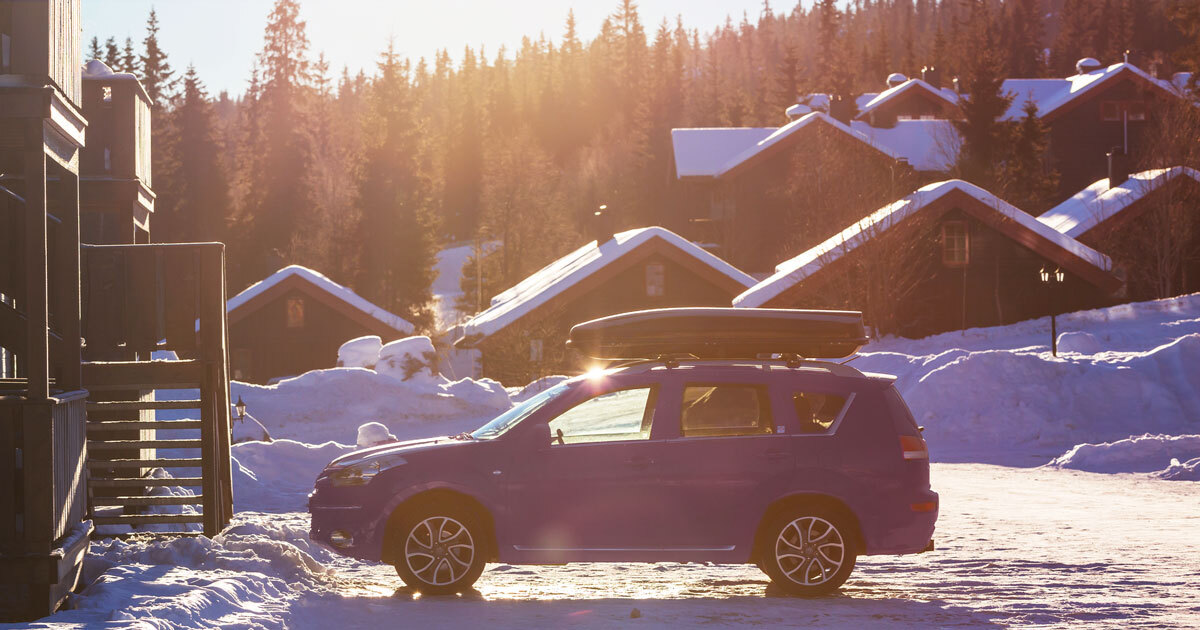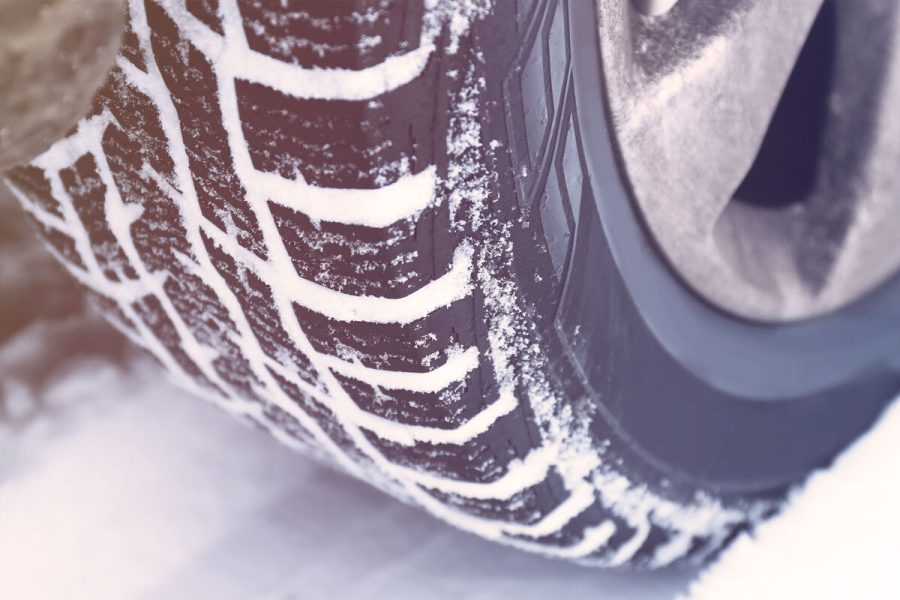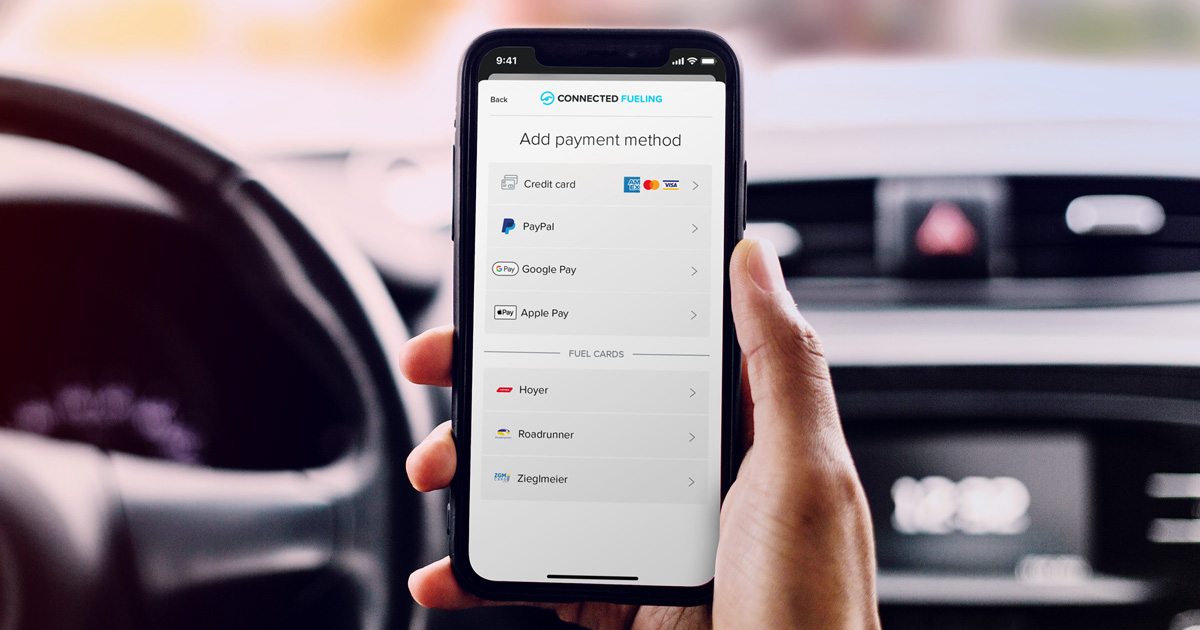
Winter preparation for the car: tips and checklist
The cold season is problematic for vehicles as they are put to the test by snow and ice. Low temperatures, moisture and road salt put more strain than usual on many car components and systems. If you take a few simple measures, you can prevent unnecessary breakdowns, extend the service life of your vehicle and ensure stress-free journeys.

Winter equipment in the car
An ice scraper and snow brush are part of the basic equipment so that you can quickly ensure good visibility. A warm blanket is also a good idea if you have to stay in a cold vehicle for a long time in the event of an unexpected stop, such as a breakdown or traffic jam. With the PACE Drive app, you can also stay in the car during the refueling and payment process and pay directly at the petrol pump – a clear advantage on cold winter days. Simply download the free PACE Drive app from the Apple App Store or Google Play Store.
Jump leads are also useful, as car batteries often weaken in the cold and can be revived quickly in an emergency. If you are traveling in mountainous or remote regions, you should also have snow chains in your luggage. A torch and some grit – such as sand or salt – as well as a tow rope can also be helpful if you get stuck on icy surfaces. The standard equipment required by law, consisting of a high-visibility waistcoat and first aid kit, is of course also included.
Winter tires and tire tread
Winter tires are essential in the cold months and are even mandatory in Germany. In this country, situational winter tires are mandatory: as soon as winter road conditions such as slippery roads or slush occur, vehicles may only drive with suitable winter tires. Thanks to special rubber compounds and tread structures, these offer better grip than summer tires.
Make sure that your winter tires have a minimum tread depth of 4 mm. Although 1.6 mm is required by law, a deeper tread ensures significantly better grip on slippery roads. We recommend changing your tires in October or early November at the latest, before the first frost sets in, as summer tires, unlike winter tires, become harder in the cold and therefore lose grip. You either have the choice of changing the tires yourself or having them done by specialists at the garage of your choice. It should also be noted that tire pressure drops much faster in winter and therefore needs to be checked more frequently. But even with winter tires, it is important not to drive too fast in cold temperatures, to brake gently and to avoid sudden steering movements, especially on icy roads.

Battery check
The car battery is under particular strain in winter. Cold weather considerably weakens the performance of the battery – at temperatures below freezing, its capacity drops by up to 50 per cent. This can quickly lead to starting problems in winter, especially with older batteries. Electric cars also struggle with colder temperatures and have lower ranges and reduced charging speeds, which is why it can be worth parking the cars in warmer locations such as a garage.
If your battery is already a few years old or the readings in a workshop are lower, it may be worth replacing it to avoid problems in winter. If the quality of the battery is assured, you can also pay without worry in winter using the PACE Drive app from the driver’s seat via CarPlay or Android Auto.
Antifreeze for the radiator and windscreen washer system
To keep your vehicle functional in winter and prevent damage, there should be enough antifreeze in the radiator. Otherwise, the coolant in the engine can freeze at sub-zero temperatures, which can result in serious engine damage. It is therefore important to check the antifreeze level in good time and top it up if necessary. Protection down to at least -25 °C is ideal for traveling safely even in extreme temperatures.
The windscreen washer system also needs special antifreeze to prevent the nozzles from freezing up. You should also check the windscreen wiper blades and replace them if necessary, as older wiper blades often become brittle in the cold and leave streaks.
Caring for door seals and locks
Caring for door seals and locks is an often underestimated but important part of winter preparation. As moisture can freeze on the rubber seals in sub-zero temperatures, doors and boot lids can become stuck and difficult to open. As a preventative measure, it is advisable to treat the rubber seals on the doors, boot and bonnet with a special care product or a simple household product such as silicone or baby oil.
If the locks are frozen, we recommend using a special lock de-icer, which should be kept outside the vehicle.
Protecting the paintwork and cleaning the vehicle
Road salt, dirt and moisture are particularly hard on the paintwork in winter and can lead to rust damage in the long term. A thorough vehicle cleaning before the start of the winter months and a protective paint sealant help to protect your car from these influences. Ideally, you should clean the paintwork, the wheel arches and the underbody at the start of winter in order to optimally prepare the surface for sealing and underbody protection.
The windscreen should also be cleaned regularly and, if necessary, treated with a water-repellent agent to maintain a clear view in rain and slush.

